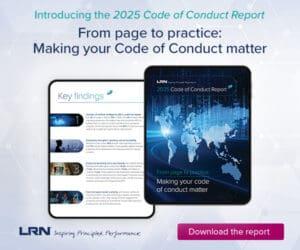The FAA just moved to bring more transparency to charter aviation. Darcy C. Osta, a veteran aviation attorney with LeClairRyan, explains how those who charter aircraft can use the new rules to maximize safety.
When chartering a flight, companies naturally want to know as much as they can about the air carrier and its track record, but until this past Valentine’s Day — when a raft of new FAA regulations took effect — charter aviation had a transparency problem.
A deadly crash from 2004 called attention to the issue. When investigators from the National Transportation Safety Board (NTSB) tried to figure out what had happened, they discovered that the charter aviation company involved had been operating under a confusing proliferation of revolving trade names. The investigators and even some executives at the charter company itself struggled to figure out the relationship between the swirl of DBAs involved.
The NTSB took action and, in 2006, issued a safety recommendation to the FAA to require more transparency in the charter world. Specifically, the NTSB recommended that passengers of charter flights under Part 135 be given sufficient information to allow the passenger to make an informed decision about the flight. The new Charter Broker Rule is the result of that recommendation (yes, it was a long time coming).
The new rule governs interactions between brokers, charterers and carriers and is the FAA’s effort to encourage transparency, clamp down on deceptive or unfair trade practices and improve the consumer experience.
If your company charters aircraft, it is important to study these changes and work with your legal team to draft policies and procedures geared toward taking full advantage of them. Below is a description of the rules in broad outline.
Mandatory Disclosures for Air Charter Brokers
Before entering into a contract, air charter brokers now must disclose to the charterer:
- the corporate name of the direct air carrier in operational control of the aircraft and any other names it uses publicly;
- the capacity, as spelled out in the regulations, in which the air charter broker is acting (i.e., whether it is an indirect air carrier or a bona fide agent of a charterer or air carrier);
- the existence or absence of liability insurance held by the air charter broker covering the charterer, passengers and property on the charter flight and the monetary limits of any such insurance.
Info Available Upon Request
Importantly, charterers are now entitled to additional information upon request to the broker.
- Brokers that serve as agents of charterers must disclose, upon request, any corporate or business ties, including pre-existing contracts, between themselves and the air carrier in operational control of the flight. The FAA’s goal here is to expose any financial incentives that might influence a broker’s decision to work with a particular carrier.
- Upon request, charterers are now entitled to receive the total cost of the air transportation in question. This includes any fees charged by the carrier or broker and/or any related taxes. Charterers can also request the amount of any fees (or a good-faith estimate) collected by third parties for fuel, landing, aircraft parking, hangar usage and the like.
Mitigating Risk of a “Bait and Switch”
Imagine a situation in which you contracted to fly with a particular air carrier known for its stellar safety record. At the last minute, the broker informs you that a different, perhaps unknown carrier will be in operational control of the flight instead.
As of February 14, 2019, charterers now have the right to timely notification about changes to the flight. Per the rules, “within a reasonable time” depends on the circumstances.
What happens if the broker fails to notify the charterer of such changes within a reasonable time after that information becomes available to the broker? Under the new FAA regulations, charterers can now cancel contracts and receive full refunds for transportation and services not yet provided – a powerful protection.
As an aside, charterers would do well to study the agency’s new list of prohibited “deceptive and unfair trade practices” for brokers and agents as well. The rules spell out a wide range of potentially misleading practices by brokers, such misrepresentations related to insurance, fees, fares, pilot qualifications, carrier safety records, organizational memberships or flight details.
Know Your Rights
If your company charters aircraft, it is important to understand these new rules and incorporate them into your established process for hiring charter aviation companies. Consideration should be given to the language in your standard letters or solicitations to air charter brokers and the materials should be re-examined and potentially redrafted in light of the new regulations.
Taken together, the new regulations are a positive development for charter aviation: They empower charterers to act with better information about the companies with which they do business.



 Darcy C. Osta is a partner in national law firm LeClairRyan. Based in Alexandria, Virginia, Darcy specializes in aviation and transportation law. She can be reached at
Darcy C. Osta is a partner in national law firm LeClairRyan. Based in Alexandria, Virginia, Darcy specializes in aviation and transportation law. She can be reached at 








